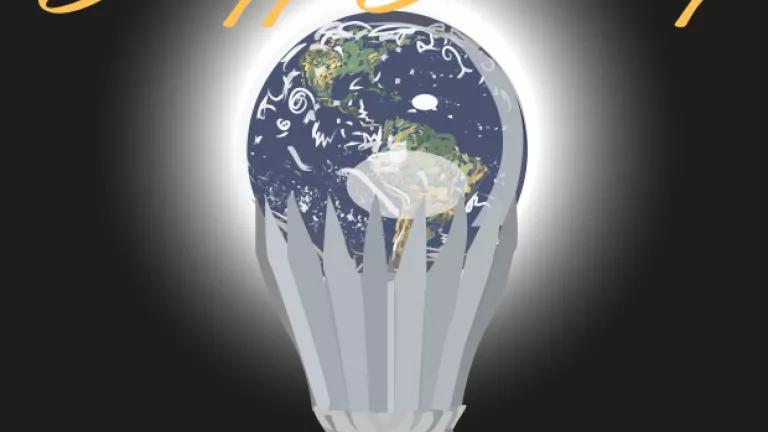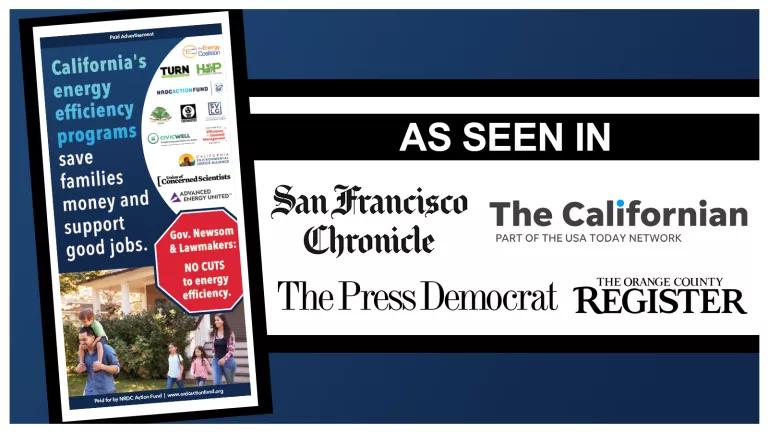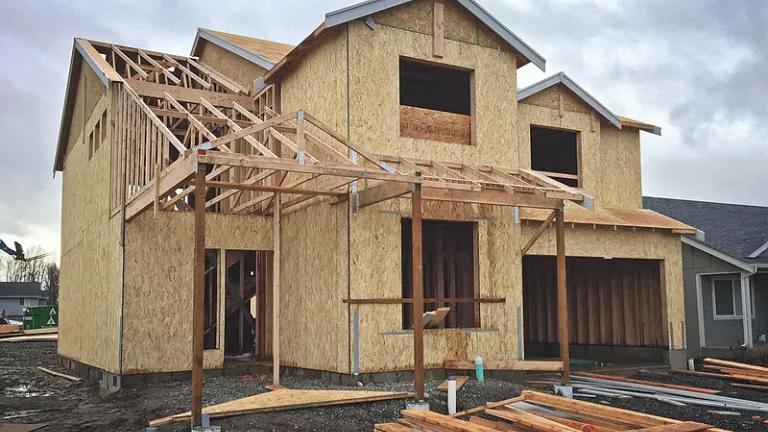Ending Carbon Pollution: The Energy Efficiency Imperative

A recommendation for America to “invest in energy efficiency and productivity” leads a new blueprint for “Accelerating Decarbonization of the U.S. Energy System” by the National Academies of Sciences, Engineering and Medicine. This is the latest confirmation of a resounding consensus that energy efficiency improvements are at the heart of any plausible plan for halting the carbon pollution fueling the climate crisis.
Recent reports also by the International Energy Agency, the American Council for an Energy Efficient Economy (ACEEE), and Evolved Energy all agree: Affordable, equitable, and reliable electricity service in an economy reducing carbon emissions depends vitally on harnessing the full capacity of cost-effective energy efficiency.
In fact, ACEEE concluded that “[e]nergy efficiency can slash U.S. energy use and greenhouse gas emissions by about 50% by 2050, getting us halfway to our national climate goals,” and that “[w]e can achieve almost all these savings, worth more than $700 billion in 2050,” by dramatically scaling up government policies and utility programs already in place.
Energy efficiency is the cheapest and fastest way to meet growing energy demand while reducing the pollution that drives dangerous climate change and harms our health because the cleanest energy source is the one you don’t burn in the first place.
Smarter energy use also saves consumers money, creates high quality jobs, spurs investment in new technologies, boosts U.S. competitiveness in the global marketplace, and strengthens our energy security. Efficiency also can be critical to easing the energy burden of low-income households, which pay a disproportionate amount of their limited income for energy and often live in older, leakier housing with aging, inefficient appliances and heating systems
Prospects for government leadership to increase America’s energy efficiency improved dramatically with the arrival of the Biden administration. For their part, America’s utilities have long recognized the importance of energy efficiency programs as a crucial path to lower bills and emissions; the first such programs date to the 1970s, and a decade ago a trend toward sustained increases in investments and savings was clearly visible. Unfortunately, progress has stalled of late (with industry-wide annual investment roughly flat at about $8 billion in the years following 2014), according to the authoritative annual assessment of the Consortium for Energy Efficiency.
Why aren’t we doing more?
Much of the problem lies with state utility regulators and local utility boards, which too often arbitrarily limit energy efficiency investment and treat their utilities like commodity providers whose financial health requires sustained growth in retail electricity and gas sales.
Two essential elements of “decarbonization” pose particular challenges for traditional utility business models: massive economy-wide acceleration of energy efficiency and demand response for all customer classes, and a diverse portfolio of utility grid enhancements and zero-carbon resource additions requiring long-term investment and cost recovery. Regulators need to act to ensure that energy sales reductions don’t affect utilities’ capacity to make those investments.
To be sure, utilities have always needed a solution to the conflict of interest that cost-effective reductions in energy demand can create between shareholders and customers, along with reasonable assurances of cost recovery for new infrastructure. But the urgent need to end carbon pollution raises the stakes massively. Regulatory frameworks that might once have worked tolerably well will be increasingly untenable in the decades ahead.
Efficiency and Electrification
Decarbonization also requires an extensive shift from fossil fuels to clean electricity in buildings and vehicles, but it would be wrong to assume that somehow this removes the need to move utilities away from a business model linked to commodity sales, or that the value of end-use efficiency is somehow diminished as electrification increases. For example, Amory Lovins of the Rocky Mountain Institute has shown that untapped energy efficiency potential in electric vehicles would more than triple fleet average miles/kWh, freeing up low-cost clean electricity to slash carbon emissions in other sectors like buildings, industry and agriculture.
As explained in detail in my forthcoming article in the Electricity Journal (March 2021), solutions lie in coalition-based advocacy that
- Advances a utility business model that, while fully consistent with traditional regulatory principles, better accommodates cost-effective energy efficiency and other critical parts of the clean energy transition to which most utilities have committed; and
- Removes outdated and dysfunctional regulatory restrictions on utility investments in cost-effective energy efficiency.
I began this blog by citing the National Academies’ latest study, and I’ll close with its conclusion: “the energy transition provides an opportunity to build a more competitive U.S. economy, to increase the availability of high-quality jobs, to build an energy system without the social injustices that permeate the current system, and to allow those individuals and businesses that are marginalized today to share equitably in future benefits.” But the Academies also made clear that we can’t succeed without much more of our fastest, cheapest and cleanest solutions: energy efficiency improvements.


